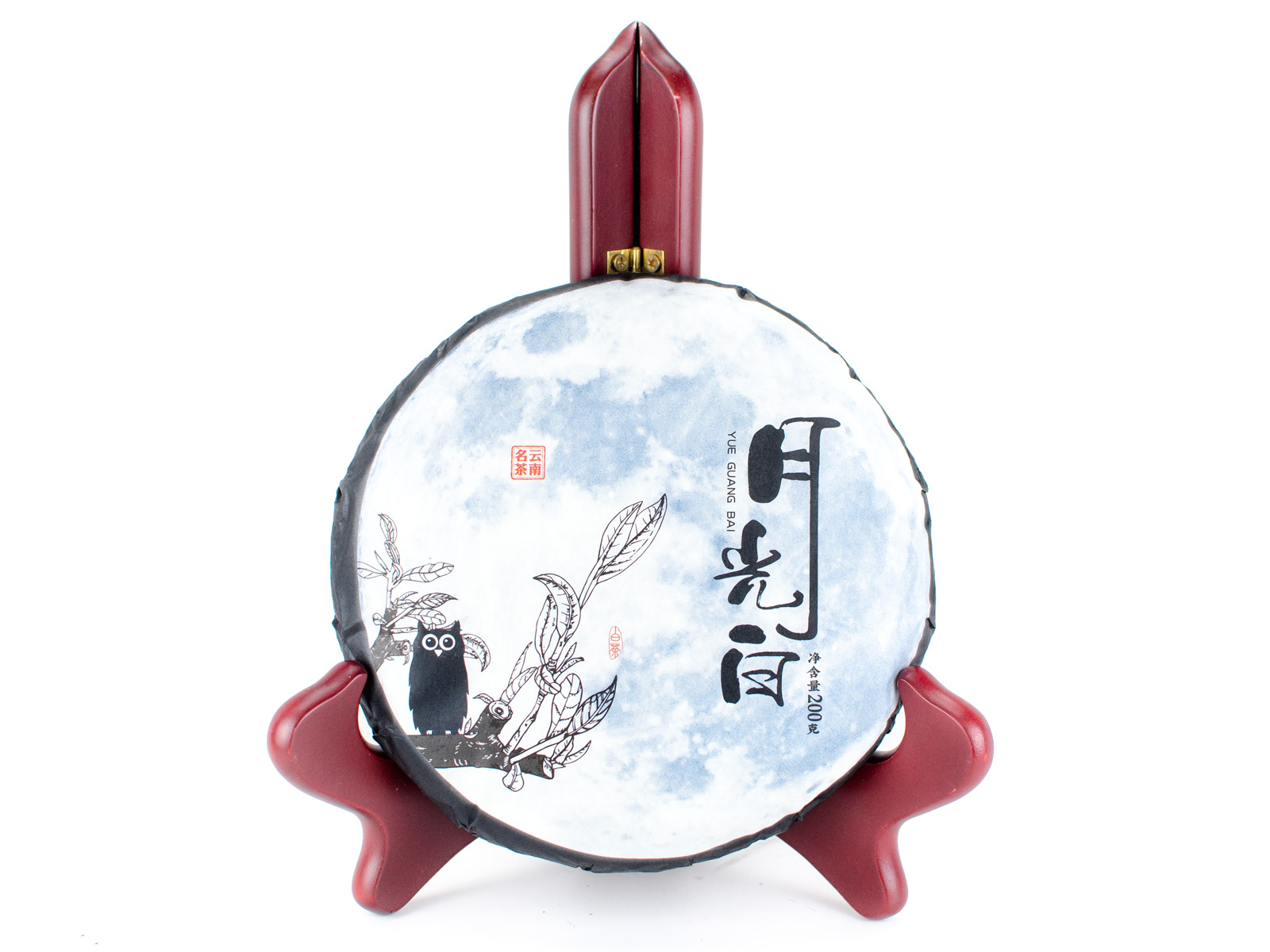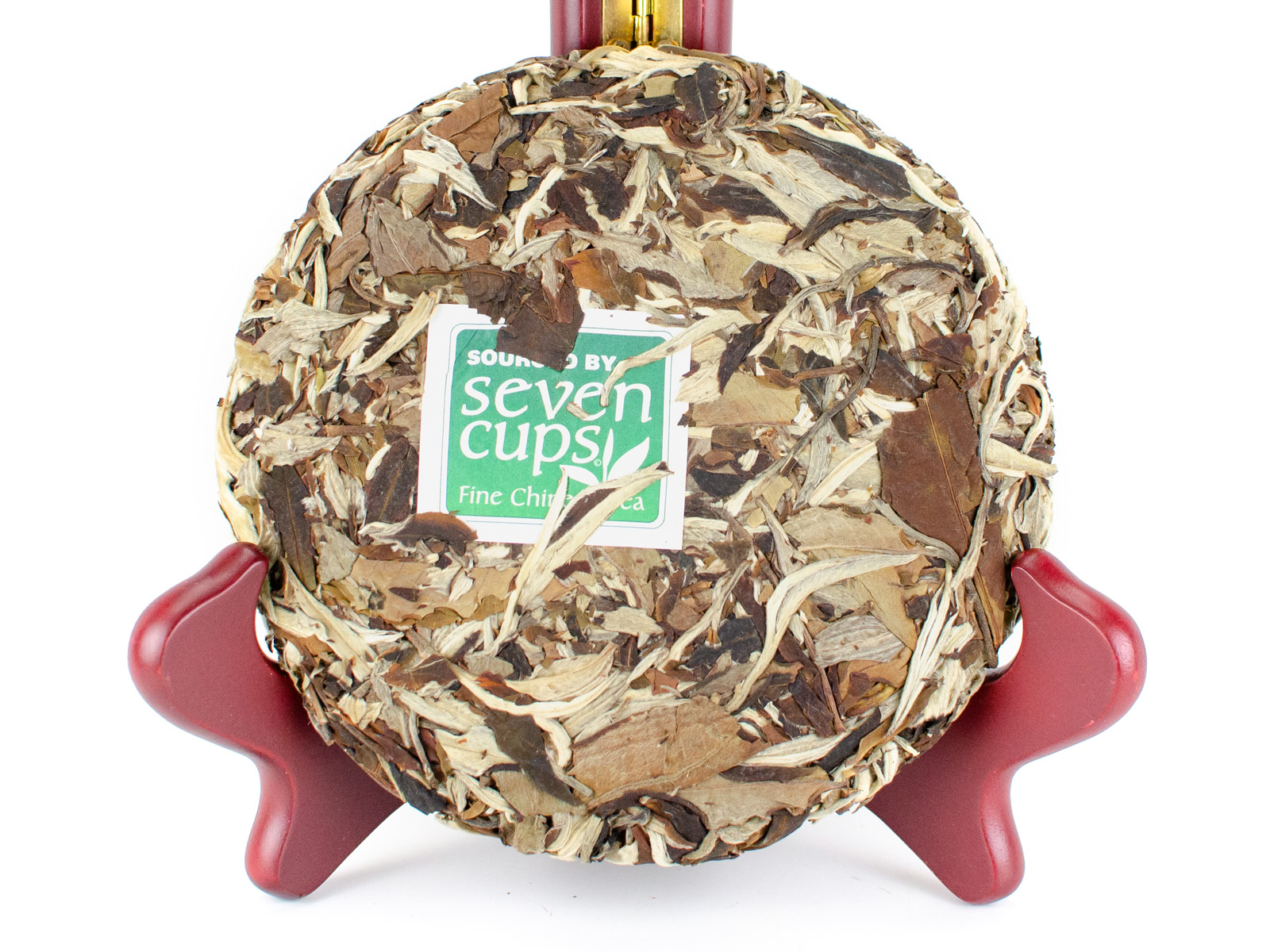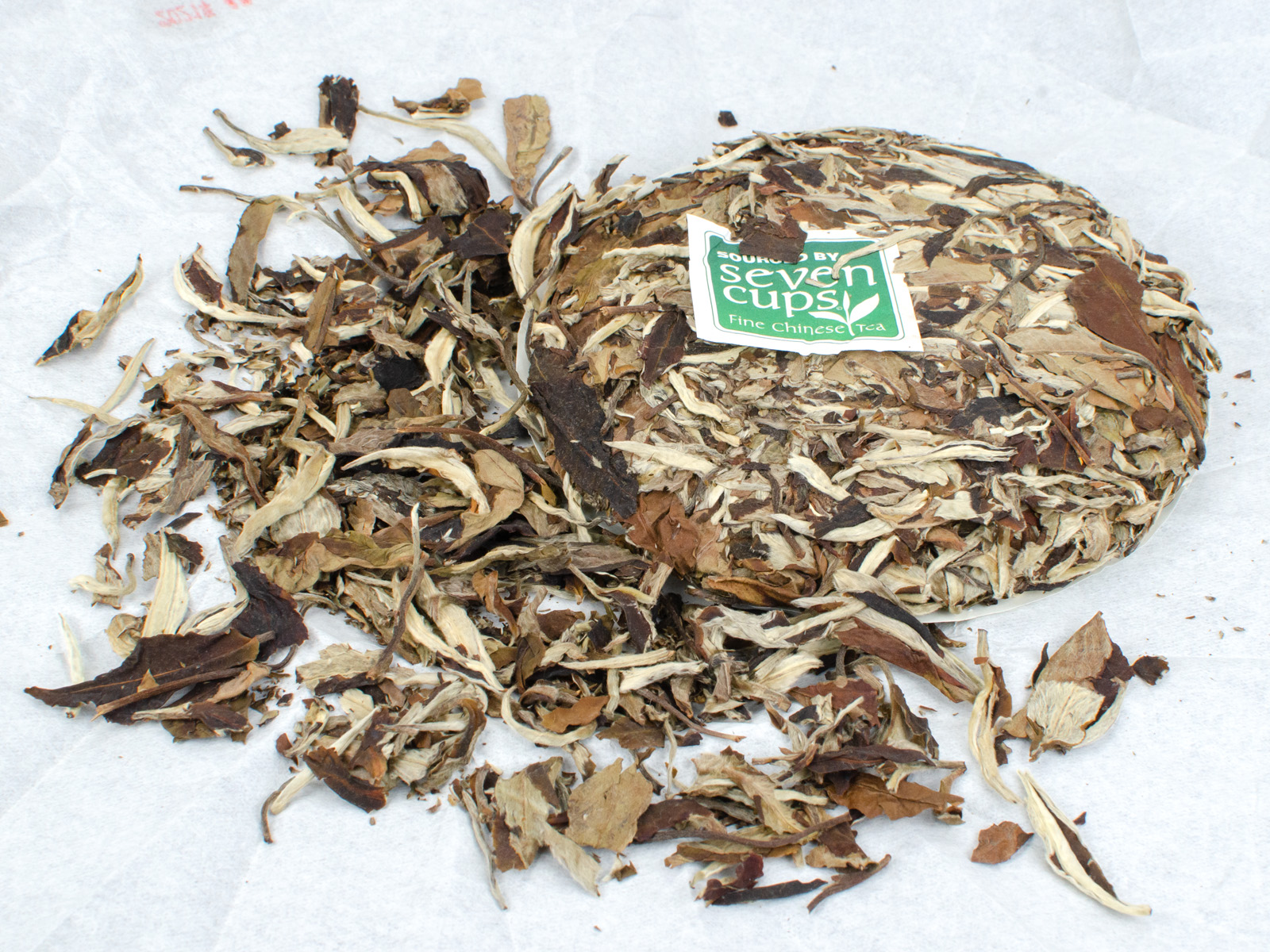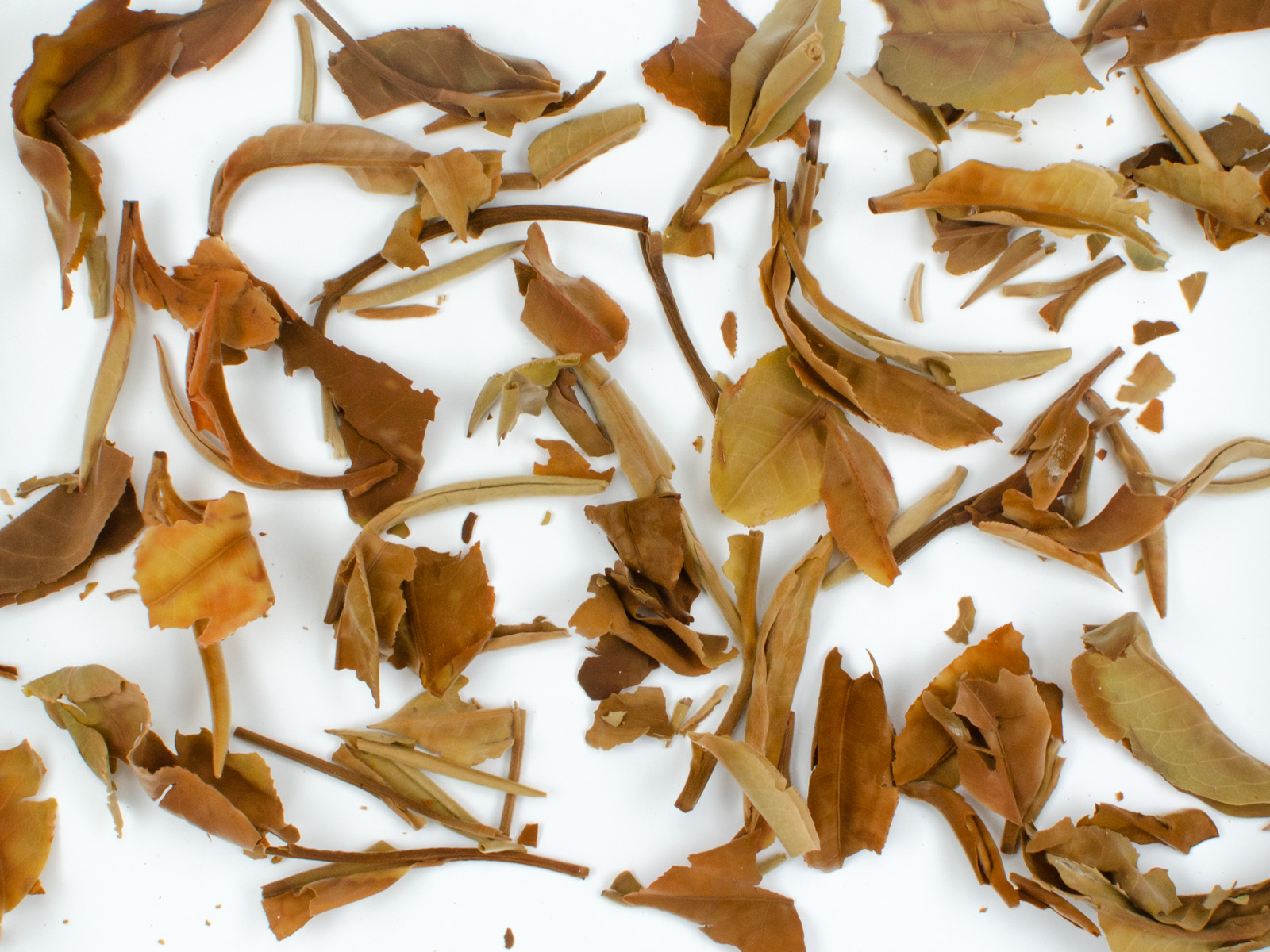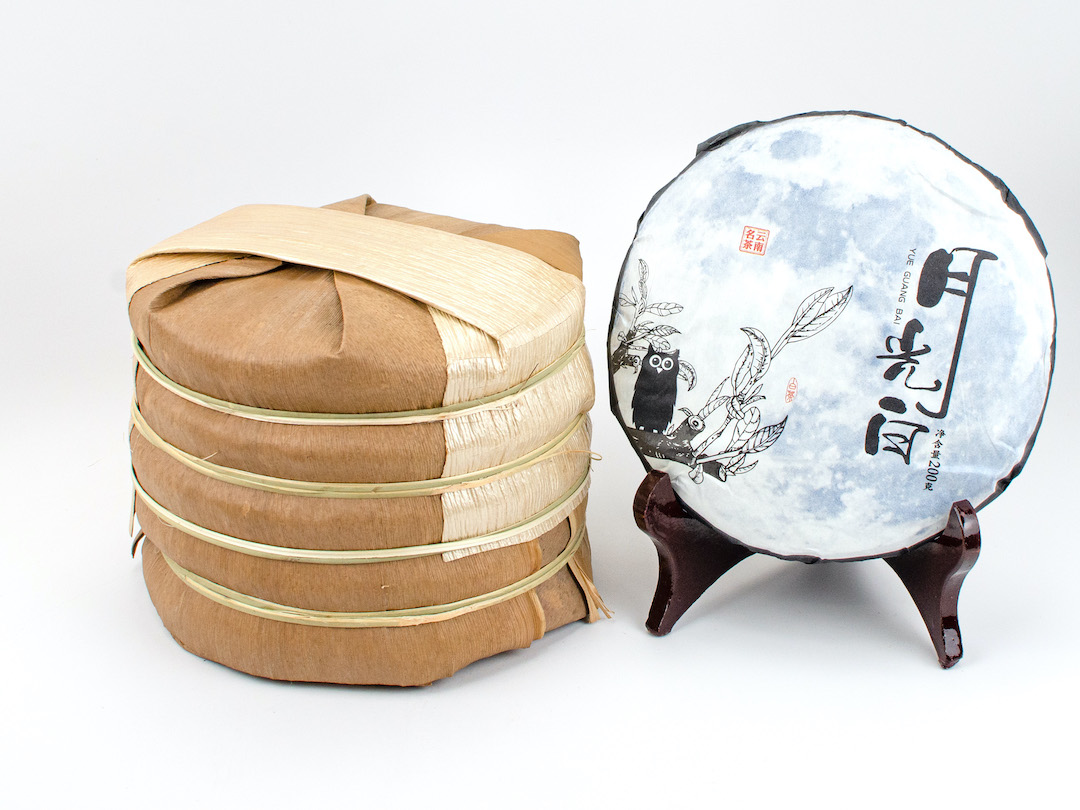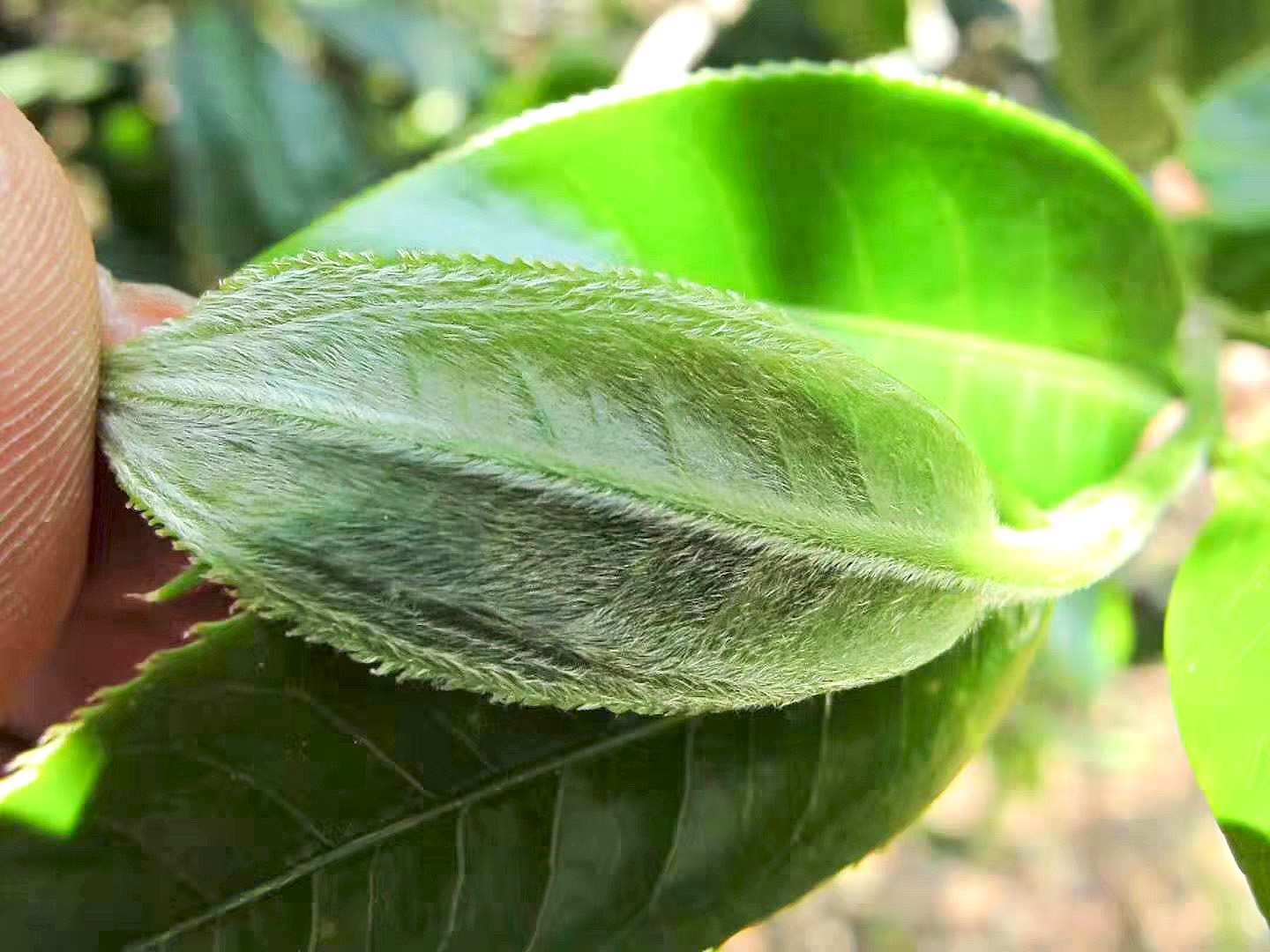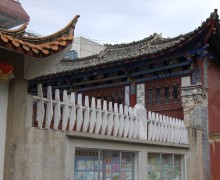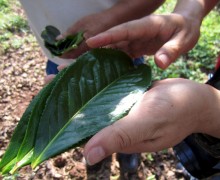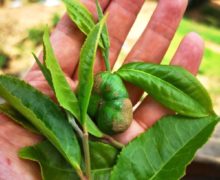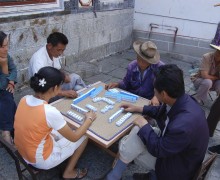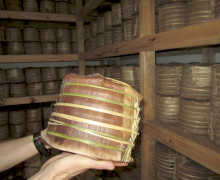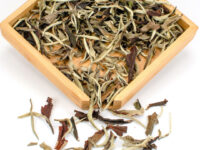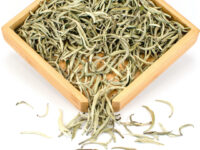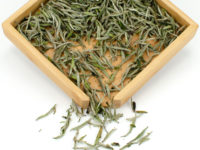Yue Guang Bai (White Moonlight)
Yunnan White Tea Cake 200g 2024
Unique ‘dark’ withering process by slow natural air-drying develops an unusually smooth flavor from leaves and buds that would have been used for high-end sheng puer. Particularly light and smooth, very popular for its complex wildflower aromatics and deep sweet fruity flavors. Excellent for new puer drinkers and white tea drinkers.
2024’s White Moonlight is particularly dark and deep this year, showing surprising savory woody notes without sacrificing sweetness. The result is an incensed brew with bold top notes and a layered complexity that hints toward its origins in sheng puer country.
Available at a discount when you buy a full stack of 5 cakes (details below).
$64.00
Out of stock
Would you like a notification when this product is back in stock?
- 2024 $16.50
- Tea Origin
- Jinggu, Yunnan Province, China
- Tea Bush
- Yunnan Daye Quntizhong (Yunnan Large Leaf Heirloom Tea Tree)
- Tea Maker
- Gong Liping and Ran Yijun
- Harvest Time
- March-April
- Plucking Standard
- One bud, one leaf
The tea buds and leaves used for White Moonlight normally would have have been made into high-end sheng puer. However, they were instead put through a unique ‘dark’ withering process by slow natural air-drying, which developed an unusually smooth flavor similar to white tea. Particularly light and smooth compared to a sheng puer, this is an excellent choice for new puer drinkers as well as white tea enthusiasts. White Moonlight’s leaves are known for their motley dark-and-light coloring, and this is the easiest way to pick the tea out.
Though normally harvested in late February or early March, in recent years Yue Guang Bai has been harvested almost a month later in late March and early April. Persistent drought in Yunnan has made the tea buds grow more slowly and take longer to mature in the spring. However, these drought conditions have created a tea with a deeper and more intense flavor. The longer growing period means the leaves were exposed to more sunlight, and in response they produced more antioxidants.
Unique Slow Drying Process
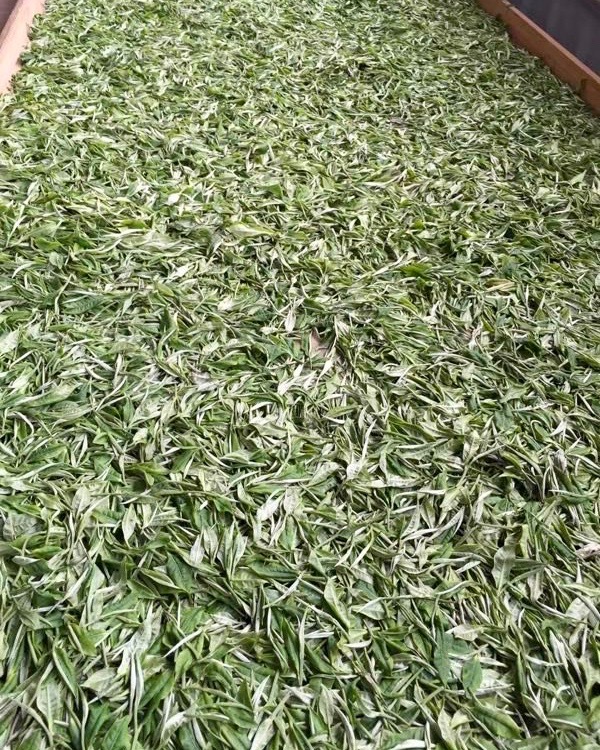
Yue Guang Bai leaves are not withered in the typical hot noon sunlight like most teas. Rather, they are withered indoors or can even be withered outside at night (poetically speaking) “under the moonlight,” if there’s a nice dry night-time wind picking up over the cooling land. This unusual method of manufacture necessitates careful attention from the tea maker as it withers over approximately 24 hours. The leaves need to have air flow maintained over them to avoid molding. However, the careful process is well worth the effort. This “dark wither” is thought to give the tea a very soft character without losing its depth.
You can learn more about White Moonlight’s processing and nomenclature on our tea blog.
Origins and tea cultivation in Jinggu
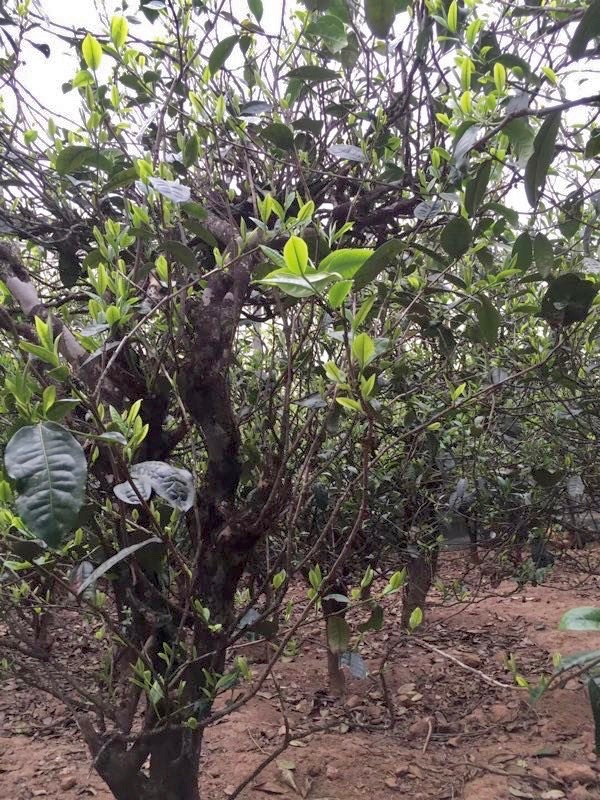
The tea leaves that are used to make Yue Guang Bai (White Moonlight) come from an altitude of approximately 1500 meters high in the mountains of Xiao Jinggu in Yunnan Province. Jinggu County is the largest forested county in Yunnan and it grows some of the richest mao cha available. It is also known for producing sweet Chinese dates. The local tea trees have new growth that is covered in very fuzzy white hairs on the undersides of the leaves. This is easily seen in the young one-bud-one-leaf pluckings used in Yue Guang Bai. Made from tea trees rather than tea bushes, traditional White Moonlight can be infused more times while still providing good flavor and aroma.
The tea gardens where White Moonlight grows are surrounded by popular local crops, commonly mango, which have an impact on the aroma and flavor of the tea leaves. The plucking standard for this cake is one bud to one leaf.
Making Puer Cakes
Hailing from Yunnan Province, this Yunnan White Tea is often compressed into cakes in the same style as puer cakes.
To compress puer into cakes, the tea is weighed with a scale – the traditional weight was 357 grams, but now many factories use 400 grams as a standard. (Yue Guang Bai is an unusual half-size 200g cake.) A piece of cotton fabric that will hold the tea leaves is placed inside a special 1 foot deep tin bucket that has holes on the bottom. Then the bucket it is filled nearly to the top with dried tea leaves.
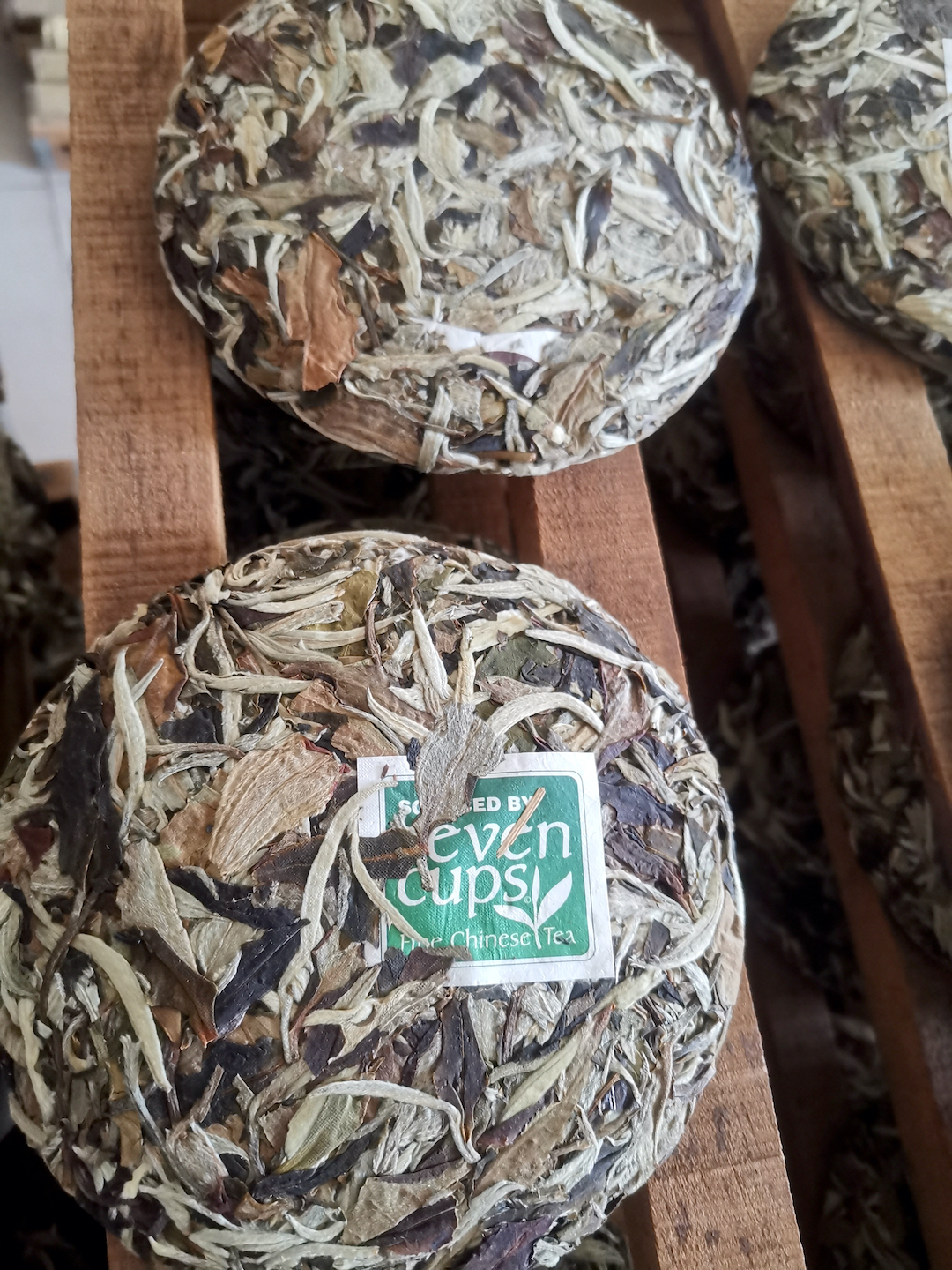
They place a one inch square of paper that is stamped with the company’s logo on top of the cake, with a few leaves covering the sign. The stamp will become slightly embedded in the cake, a sign of authenticity showing that the tea has not been separated from its original label. One person sits in front of a steamer, steaming the leaves for 3-5 seconds and then removing the fabric and wet leaves from the bucket. The dry tea leaves are condensed from being very light and puffy down to a layer only 3 inches thick. The next person will quickly tie the fabric, making a knot at the end. They then compress the knot into the center of the cake under a compression machine. It takes a perfectly precise amount of pressure to compact the wet tea leaves tightly into a one inch thick cake. This process leaves the tell-tale indentation mark on the back of puer cakes.
Some producers still use the traditional method of compressing cakes, which requires two stone molds curved to match the shape of puer cakes. Someone stands on top of the filled mold and applies their body weight evenly to press the cake into shape. Factories that use this method will have one worker whose job it is to compress these cakes so that they are all compressed the same amount. They must be a specific weight so as to not over-compress the cakes.
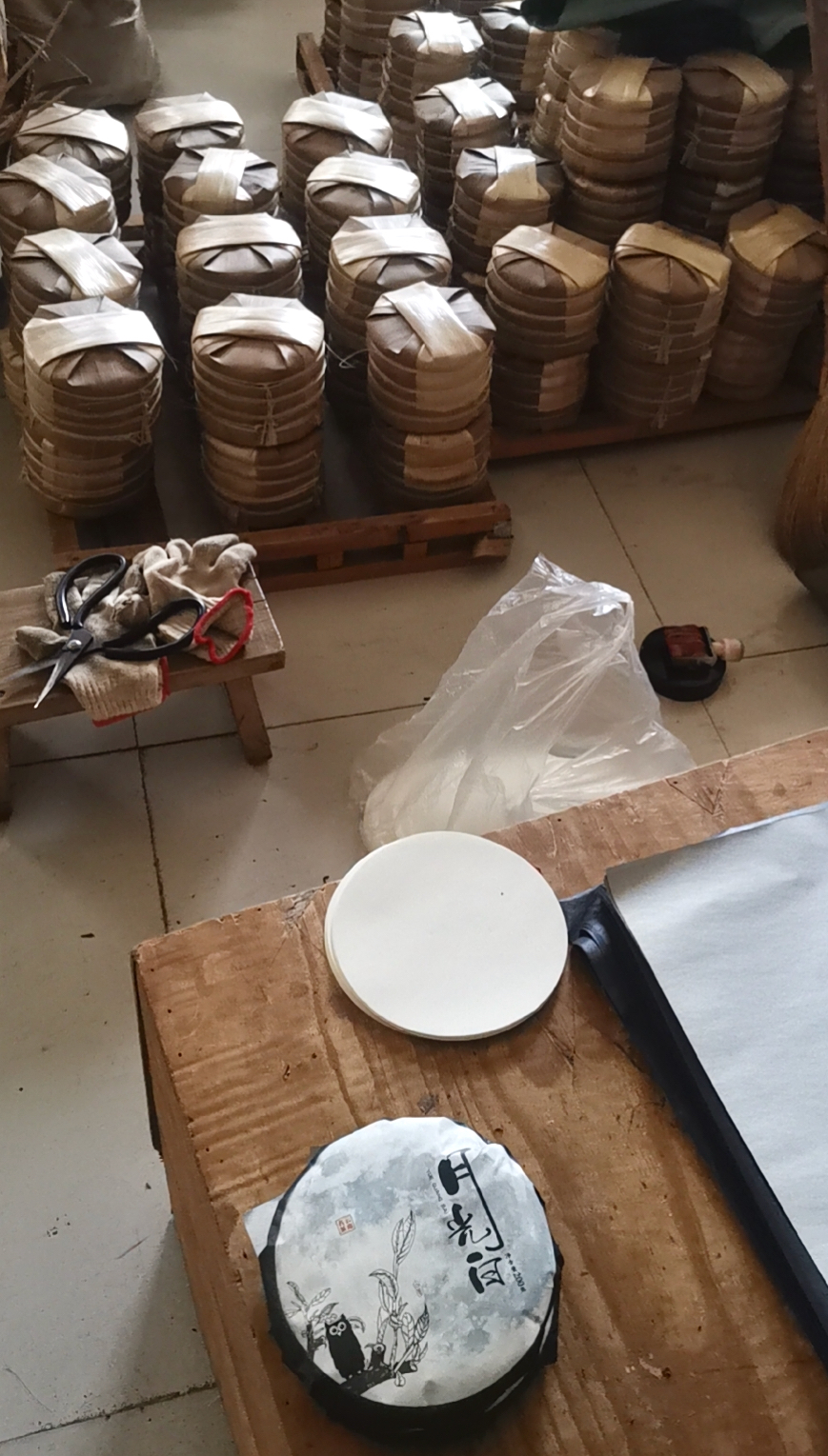
The small amount of space between the leaves after compression will allow air to move through and naturally oxidize or ‘ferment’ the cake over the years. After a few hours, the wet cakes are removed from the fabric and placed on wooden shelves to slowly dry for a few hours at a temperature of about 40°C (104°F).
Once the tea is dry, the cakes are sent to a skilled tea worker who uses cotton paper to quickly wrap the cakes. They will typically fold the squares of cotton paper so there are exactly sixteen folds. Stacks of 7 cakes known as tongs are packed in clean, dry bamboo shells. These shells are tied together with bamboo string to secure them for transportation. This traditional packing method is still often used. The bamboo shell will protect the tea from rain while still allowing the tea to breathe. Bamboo is a very neutral scent, and will insulate the tea from picking up other scents.
No chemical fertilizer, pesticide, or herbicide was used in the production of this tea. Click here to read more about our promise to fair trade and the environment.
Total cake weight may vary due to the gradual moisture loss with aging.
Full Stack Discount
This compressed tea cake traditionally comes in a stacked tong of 5 cakes tightly wrapped in bamboo for transport and storage. If you’re looking to buy in bulk, tongs of Yue Guang Bai (White Moonlight) are available to you at a 5% discount in their original bamboo packaging. To get this full tong discount, add the five (5) Yue Guang Bai cakes to your cart, then click the 5% discount coupon that appears on the bottom of the cart page (or the top of the checkout page).
The bamboo wrapping of the tong protects the tea cakes from breakage and insulates them from external odors and excess moisture while remaining breathable. To open a tong, untuck the ends of each individual bamboo tie from the loop below it, then untwist the two ends from each other. The single knot in the tie can then be undone. Then it will easily loosen and come unwound from the tong. Your individually paper-wrapped cakes will be inside.

